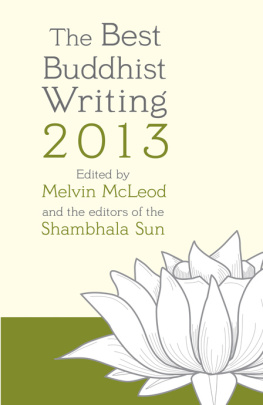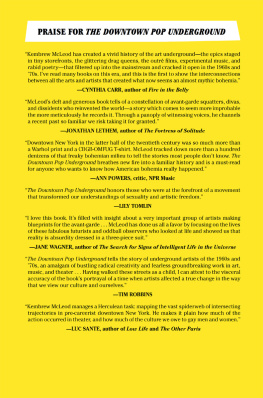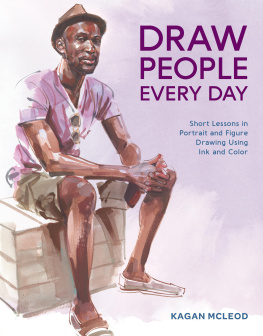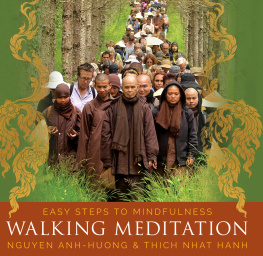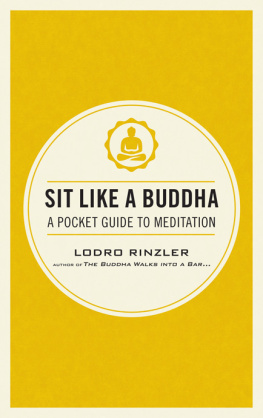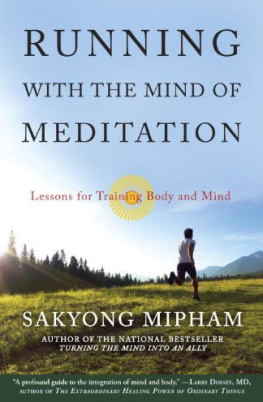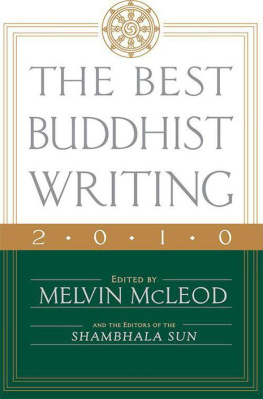A thought-provoking collection of the most notable and insightful Buddhism-inspired writing published in the last year:
- Thich Nhat Hanhs vision for a more enlightened and sustainable society
- Ezra Bayda on avoiding the pitfalls that arise on the path of meditation
- Tsoknyi Rinpoches powerful Dzogchen practices that help you to discover your minds inherent awareness and clarity
- Lodro Rinzler on what happens when the Buddha walks into a bar
- Karen Maezen Miller on the virtues of boredom
- Phillip Moffitt on how to transform emotional chaos into confidence and clarity
- Joseph Goldsteins unique nine-minute meditation practice that you can incorporate into your busy day
- Elihu Genmyo Smith on being still
- Pema Chdrn on how to become a bodhisattva
- Sakyong Mipham on how mind, breath, and energy work together in meditation to transform your life
- Judy Lief on the fifty-nine ancient slogans that can help you be more skillful and loving in all your relationships
- Bonnie Friedman on discovering nonattachment while apartment-hopping in Brooklyn
- Jules Shuzen Harris on what anger can teach you
- Pico Iyer on travel as contemplative practice
- And much more
MELVIN MCLEOD is the editor-in-chief of the Shambhala Sun and Buddhadharma: The Practitioners Quarterly. He is also the author of Mindful Politics: A Buddhist Guide to Making the World a Better Place.
Sign up to learn more about our books and receive special offers from Shambhala Publications.

Or visit us online to sign up at shambhala.com/eshambhala.

THE BEST BUDDHIST WRITING 2013 
Edited by Melvin McLeod
and the Editors of the Shambhala Sun

SHAMBHALA
Boston & London
2013
Shambhala Publications, Inc.
Horticultural Hall
300 Massachusetts Avenue
Boston, Massachusetts 02115
www.shambhala.com
Cover design by Jim Zaccaria
2013 by Melvin McLeod and the editors of the Shambhala Sun
All rights reserved. No part of this book may be reproduced in any form or by any means, electronic or mechanical, including photocopying, recording, or by any information storage and retrieval system, without permission in writing from the publisher.
Library of Congress Cataloging-in-Publication Data
The best Buddhist writing 2013 / edited by Melvin McLeod and the editors of the Shambhala Sun.
pages cm
eISBN 978-0-8348-2914-5
ISBN 978-1-61180-069-2 (pbk.)
1. Buddhism. I. McLeod, Melvin, editor of compilation. II. Shambhala sun.
BQ4055.B4754 2013
294.3dc23
2012012376
Contents
David Rynick
Elihu Genmyo Smith
Lodro Rinzler
Sakyong Mipham
Kay Larson
James Ishmael Ford
Zoketsu Norman Fischer
Shyalpa Tenzin Rinpoche
Dzongsar Jamyang Khyentse
Bonnie Friedman
Sylvia Boorstein
Karen Maezen Miller
Ira Sukrungruang
Thich Nhat Hanh
Pema Chdrn
Judy Lief
Tsoknyi Rinpoche
Natalie Goldberg
Pico Iyer
Phillip Moffitt
Joseph Goldstein
Ezra Bayda
Rachel Neumann
Shinzen Young
Reb Anderson
Karl Brunnhlzl
Jules Shuzen Harris
Genine Lentine
Traditionally in Buddhism, there are two ways to realize enlightenment. The first is sudden, an immediate flash of experience in which we finally see the true nature of reality. It can happen without warning or apparent cause, yet is only possible because of the years of discipline, effort, and meditation that preceded it. It can be triggered by almost anythingthe sharp words of a teacher, a bird flying overhead, some surprising event that stops our mind. My favorite example is the Zen monk who walked out of his hut at night, perhaps on his way to the latrine, and stepped into a bucket. In that instant, it is said, his world fell apart. He saw the truth.
The second way is the gradual path to realization, so subtle we may not even know its happening. Traditionally, its said to be like taking a long walk through a heavy fog. Its not really raining, and you dont notice your clothes getting wet. But eventually you realize that you are covered with a fine dew of awakening.
Among Buddhist practitioners in the West there are surely somemaybe the lucky oneswho have experienced that sudden, transformative flash of realization. But most of us are walking through the mist on our path of dharma, not noticing how it clings to us until, to our surprise, we are changed.
Once I was talking with Mel Weitzman, Roshi, a senior student of the great Zen master Shunryu Suzuki Roshi, and I noted that many Western practitioners were getting discouraged because they felt their practice wasnt working. His retort was, How would they know?
Realization is mysterious, hard to define, and often contradictory. There is no easy way to tell if someones meditation practice is working. And what does that mean anyway, in a Buddhist context? When the goal is realization of nondual, nonconceptual nonego, our ordinary ideas of good and bad, sacred and profane, are not always the best guide. Some of the apparently clearest signs of spiritual progress, the ones that meet our conventional definitions, may actually be far away from genuine dharma.
Nonetheless I will hazard an opinion: I think Buddhist practice is really starting to work in America. I see a beautiful ripening and deepening in American Buddhismin the teachings, the writings, the communities, and, most importantly, in the people. Over years of practice, study, and struggle, the mist of dharma has soaked into their minds, hearts, and lives. I think you will find this reflected in this years edition of The Best Buddhist Writing.
Although Buddhism takes many different forms around the world, the Buddhism practiced in the West over the last fifty years has generally focused on meditation practice. This years anthology is soaked in meditationits wisdom, compassion, and openness.
Whether you are an experienced meditator or a beginner, you will find here an outstanding selection of meditation teachings from the different schools of Buddhism, each with its own techniques and special genius. You could start with the basics, such as Sakyong Miphams effective How to Meditate, or Elihu Genmyo Smiths simple but surprisingly profound instruction, Be Still. From the precision of the Theravada tradition, Shinzen Youngs The Power of Gone teaches us a Vipassana technique focusing on the exact moment when phenomena pass away. Insight Meditation Society founder Joseph Goldstein offers us a unique nine-minute meditation practice we can incorporate into our busy day. Zen teacher Ezra Bayda helps us to avoid some of the pitfalls that inevitably arise on the path of meditation, and Vajrayana master Tsoknyi Rinpoche teaches us powerful Dzogchen practices to discover our minds inherent awareness and clarity.
With the clear and stable mind developed in the practice of mindfulness, meditators look deeply into the nature of reality. This is the practice of insight, through which we discover the basic truths that define Buddhist philosophy. We might discover, for instance, that our lives are marked by impermanence, suffering, and interdependence. These the Buddha called the three characteristics of experience, which Insight Meditation teacher Sylvia Boorstein frames for modern times in this anthology.
Next page
